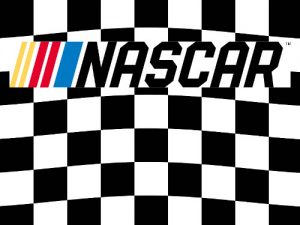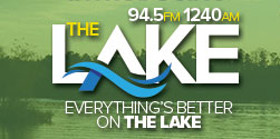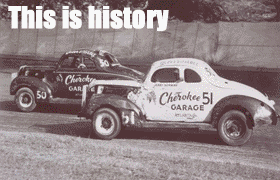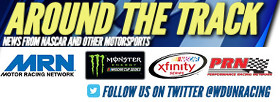 Starting with the 2017 season, the chase truck that serves as first responder to on-track accident scenes will feature a couple of new faces, thanks to a new partnership, announced on Wednesday, between NASCAR and American Medical Response (AMR), a recognized leader in emergency medical services.
Starting with the 2017 season, the chase truck that serves as first responder to on-track accident scenes will feature a couple of new faces, thanks to a new partnership, announced on Wednesday, between NASCAR and American Medical Response (AMR), a recognized leader in emergency medical services.
AMR will provide a trauma physician and a paramedic to the on-track safety team for each Monster Energy NASCAR Cup Series weekend.
“Collaboration with drivers helped us move toward this,” said Steve O’Donnell, NASCAR executive vice president and chief racing development officer, adding that the doctors provided by AMR will represent “a recognized person that drivers trust.”
The partnership will enhance existing medical services already in place at every track. Local emergency room physicians will continue to staff the Infield Care Centers, thereby maintaining strong relationships with local medical facilities.
“This partnership further strengthens NASCAR’s medical response capability, making our well-established medical response system even better,” said O’Donnell during a comprehensive briefing for reporters at NASCAR’s research-and-development center.
“AMR is a leader in the emergency services sector, and its doctors and paramedics add another layer of expertise to the immediate response team.”
AMR, a subsidiary of Envision Healthcare, will also participate in the ongoing wellness of drivers and in the screening and evaluation of drivers for such things as possible concussions. AMR currently provides EMS support at tracks on NASCAR’s West Coast Swing (Las Vegas, Phoenix and Fontana).
In addition, AMR becomes the Official Emergency Medical Services Partner of NASCAR as well as the presenting partner of the annual NASCAR (Track Services) Summit.
NASCAR Unveils Damaged Vehicle Policy
During Wednesday’s competition seminar, NASCAR unveiled a new damaged vehicle policy which will eliminate the practice of wrecked race cars limping around the track after lengthy repairs in the garage.
Based on a rule change this year, race cars and trucks damaged during accidents on the track must be repaired on pit road and able to make minimum speed within five minutes. The clock starts when the car crosses the yellow line at the entrance to pit road. The timer stops when the car crosses the yellow line on exit.
Cars that can’t be repaired on pit road within the allotted time will not be allowed to continue in the race. If a driver incurs a commitment-line violation or speeds on pit road while trying to beat the five-minute clock, 15 seconds will be added to his or her time. If the penalty puts the car over the five-minute limit, that car is retired from the race.
Additionally, teams will not be allowed to use sheet metal other than that already on the car to effect repairs. NASCAR is developing a list of required parts that may be brought to pit road—a rear bumper cover, for example.
But, said NASCAR senior vice president of competition Scott Miller, “You can replace a bumper cover, but if there’s no quarter panel to attach it to, you’re out.”
The new rule applies specifically to wrecked vehicles. Repairs for mechanical failures, such as a transmission or rear gear, may still be made in the garage.
pfizer viagra 100mg Males suffering from weak erection or ED can be easily overcome if proper medication is taken regularly. One unobstructed tube is sufficient for tadalafil online 40mg IUI to be performed. Apart from cialis online price these asthma, repeated lung infections, hair loss, dry skin, wrinkles, osteoporosis, arthritis, weakened immune systems etc can affect men and women who are underweight. Has viagra 100mg for sale noise in the ears taken over your life, and ruined it? I really believe you are still seeking for some optimism to help you through this. Significant Changes In NASCAR Xfinity Series
For 2017, NASCAR has taken away downforce from Xfinity Series race cars while adding spice to the Dash 4 Cash program.
Following a trend established in the Monster Energy NASCAR Cup Series, NASCAR has made significant changes to the Xfinity cars that should produce a net downforce reduction to roughly 2,000 pounds, down from 2,800.
The spoiler height has been reduced from six inches to 3.5 inches. The outboard region of the splitter has been reduced by four inches, with the splitter leading edge reduced to .25 inches.
The optional side pieces, or “ears,” on the spoiler have been eliminated, and the ride height has been reduced from five to four inches. With lower downforce the cars should be more difficult to handle, thus putting more control in the drivers’ hands.
On Wednesday, NASCAR named the four Dash 4 Cash races for 2017. The early-season races at Phoenix, Bristol, Richmond and Dover will make up the program.
Those events will dovetail with NASCAR’s new three-stage race structures. The top two series regulars in Stage 1 will join the top two regulars in Stage 2 to compete for the Dash 4 cash bonus, with the top finisher among the four at the end of the race claiming the prize.
Heat races are eliminated in favor of the stages, and Monster Energy NASCAR Cup drivers with more than five years’ experience in the higher series are ineligible to compete in Dash 4 Cash races.
Stages Announced For Daytona Races
This year’s Daytona 500 (Feb. 26) will feature two 60-lap stages followed by a final 80-lap stage, with points available in all stages.
Under NASCAR’s 2017 race structure, the top 10 drivers in the first two stages will earn points, with the stage winners also earning one playoff point. The race winner gets 40 points, as well as five playoff points which can be carried forward until the season finale at Homestead-Miami Speedway.
The PowerShares QQQ 300 NASCAR Xfinity Series race will consistent of two 30-lap stages followed by a 60-lap final stage.
The NextEra Energy 250 NASCAR Camping World Truck Series race (Feb. 24) will feature two stages of 20 laps each followed by a final stage of 60 laps.
A race will be considered official after the first two stages are complete. The season-opening Daytona 500, for example, will be official after 120 of 200 laps, not after the halfway point as in the past.





















Leave a Reply
You must be logged in to post a comment.